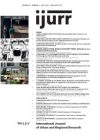This paper focuses on the typical paths of migrants’ insertion in the informal economy in Italy. It begins with a review of the international debate on the informal economy and ethnic business in order to evaluate the extent to which the current descriptive and explanatory models fit the specificity of the Italian case. When applied to the Italian context they overemphasize the relationship between the informal sector – characterized mainly by self‐employment and ethnic business – and the transformation of the formal labour market due to economic changes – the crisis of the fordist way of production, global restructuring of the manufacturing sector and so on. On the contrary, the underground economy is a long‐standing characteristic in Italy. It is an overall structural element of the Italian economy and a much more complex phenomenon than in other countries. For many reasons, migrants’ insertion in the informal economy in Italy does not produce a new trend but represents an element of continuity in the economic organization and involves documented and undocumented migrants as well as many types of Italian workers. On the other hand, this paper highlights the central role of the institutional framework – immigration policies and their implementation – in the context of the formal and actual constraints which inform immigrants’ strategies of incorporation into the formal/informal labour market. The implementation of the institutional framework, by different branches of the public administration and by the judicial system, interacts with immigrants’ economic strategies and generates mobile borders between different types of informal arrangements, as well as between the informal and illegal economy. Taking into account the structural and geographical characteristics of each economic sector, the economic institutional framework, the legal framework and the decision‐making processes that produce them, it is possible to reconsider the concept of the informal economy and to re‐evaluate its role in the most important explanatory models.
Details
Written by:
Fabio Quassoli
Digital Object Identifier (DOI)
10.1111/1468-2427.00192
About DOI
Read full article as PDF
Read full article as HTML
See the references for this article
